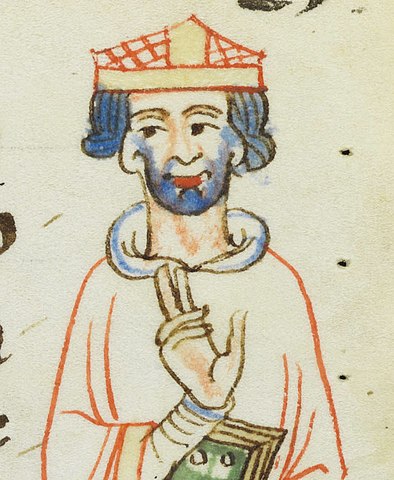Grimoire of Pope Honorius
The Grimoire of Pope Honorius, or Sworn Book of Honorius, is a 17th to 18th century grimoire, which claims to have been written by Pope Honorius III (1150 - 18 March 1227). The text was likely forged near the end of the sixteenth century, roughly four hundred years after the death of its supposed author.
Pope Honorius III
Pope Honorius III was head of the Catholic Church and ruler of the Papal States from 18 July 1216 to his death. As pope, he worked to promote the Fifth Crusade, which had been planned under his predecessor, Innocent III. Honorius repeatedly exhorted King Andrew II of Hungary and Emperor Frederick II to fulfill their vows to participate. He also gave approval to the recently formed Dominican and Franciscan religious orders.
Honorius III acquired some fame as an author. The most important of his writings is the Liber censuum Romanae ecclesiae, which is the most valuable source for the medieval position of the Catholic Church in regard to property and also serves in part as a continuation of the Liber Pontificalis. He also wrote a biography of Celestine III; a biography of Gregory VII; an "Ordo Romanus", which is a sort of ceremonial containing the rites of the Church for various occasions; and thirty-four sermons.
Part of reason Honorius III was chosen as the "author" of this text was his association with magician Michael Scot. They were both well-acquainted with Emperor Frederick II and in 1223, Honorius offered Scot the office of Archbishop of Cashel in Ireland.
Content
The first edition of the grimoire is said to have appeared in 1629, and was likely forged near the end of the sixteenth century, roughly four hundred years after the death of its supposed author. According to A.E. Waite, the book "...is a malicious and somewhat clever imposture, which was undeniably calculated to deceive ignorant persons of its period who may have been magically inclined, more especially ignorant priests, since it pretends to convey the express sanction of the Apostolical Seat for the operations of Infernal Magic and Necromancy."
It is unique among grimoires in that it was specifically designed to be used by a priest, and some of the instructions include saying a Mass. While its name is derived from the 13th century Grimoire of Honorius, its content is closer to later grimoires like the Key of Solomon and Grimorium Verum.
This grimoire contains the earliest known mention of several demons, including Lucifuge Rofocale, the Prime Minister of Hell. It also provides a variant of his seal which is different from that found in the later book, The Grand Grimoire.
Éliphas Lévi
Occultist and author Éliphas Lévi wrote extensively about the grimoire in his book La Clef Des Grands Mysteres (The Grand Mysteries). He proposed that the book was ascribed to Honorius II as a manual for controlling spirits.
"It was the manual of the bad priests who practised black magic during the darkest periods of the middle ages. You will find there bloody rites, mingled with profanations of the Mass and of the consecrated elements, formulae of bewitchment and malevolent spells, and practices which stupidity alone could credit or knavery counsel ... A man capable of evoking the Devil, according to the rites of the "grimoire" of Honorius, has gone so far upon the road of evil that he is disposed to all kinds of hallucinations, and all lies."
In his re-telling of the rituals and demonic signatures in the text, Levi made alterations to the grimoire's original formulas to make them more enticing to his readers.
